Porsche 356A (update)
September 29, 2017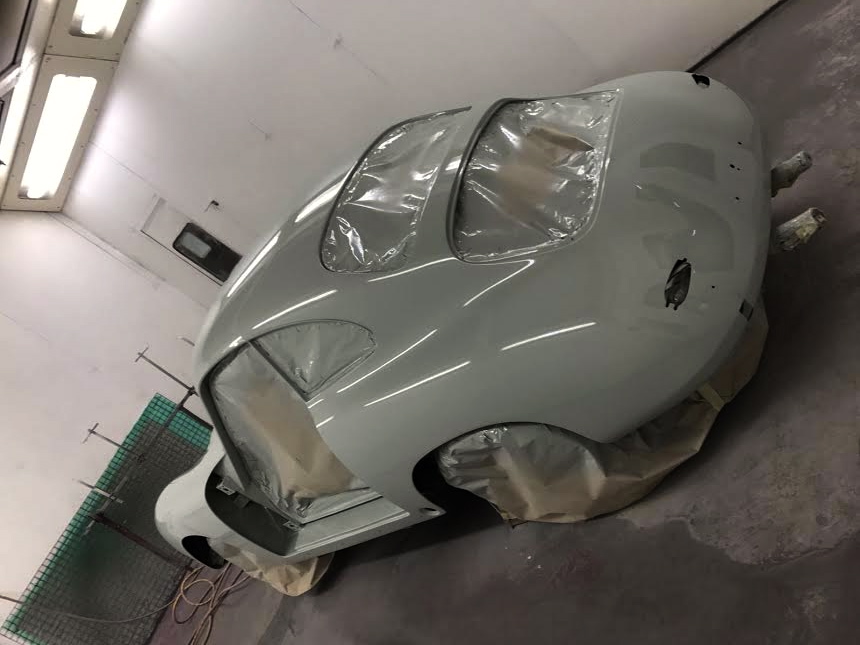
Our right hand drive Porsche 356A was painted today and yes we called it correct with the colour as it looks stunning in the grey.

Our right hand drive Porsche 356A was painted today and yes we called it correct with the colour as it looks stunning in the grey.
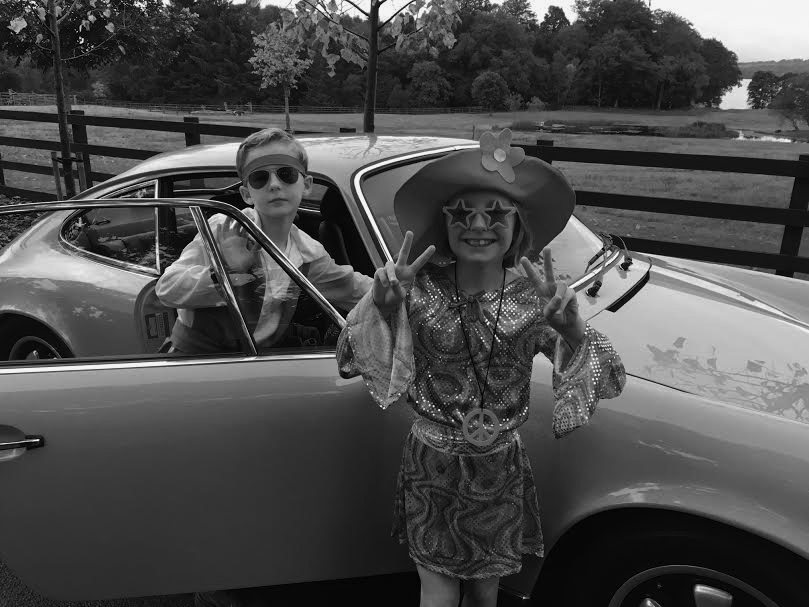
1972 Porsche 911S
The free range kids getting into the 70’s Groooove with our stunning 70’s Porsche
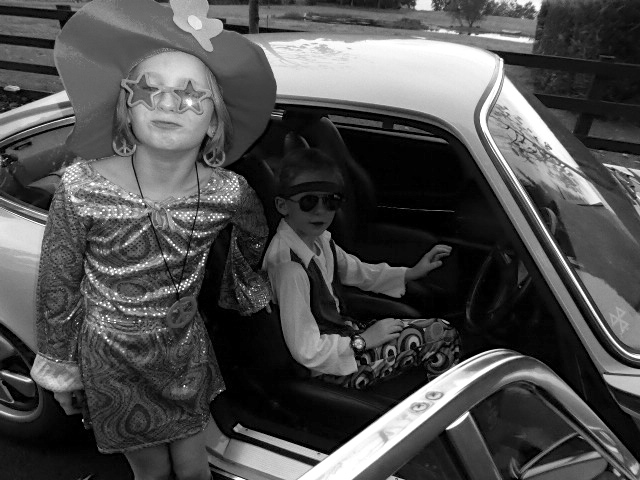
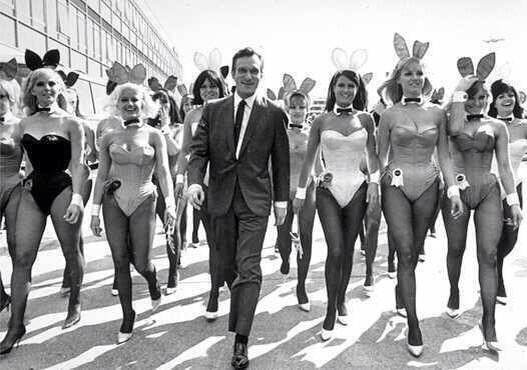
The Settrington Cup Is A Unique, Pedal-Powered Take On Vintage Racing
By Will_Broadhead
Photography also by Will Broadhead

How much would you be prepared to pay for a fully restored, classic racing car? $20,000? $50,000? Those would be pretty good deals in relative terms, and often times are the figures associated with engines rather than full packages when it comes to this variety of motorsport. But what if I told you you could have a bona fide vintage race car eligible for competition at Goodwood for just about $5,000? There has to be a catch, right? Of course there is! In this case it involves the aforementioned motors, as this particular car in question has no engine and you would have to be a hobbit, or a child, to fit into one. That said, the cars I’m referring to do at least have working lights, a horn, and proper pneumatic tires. They just need some little feet to propel them along. I’m talking about the Austin J40, and the race class for these shrunken-down pedal cars.




The J40 was born out of the car manufacturer Austin’s desire to do something in the community. It’s an idea that is commonplace these days for big businesses, but in July of 1949 it was pretty groundbreaking stuff from a marketing and PR perspective. The factory set up to build these cars was based in a mining community in Wales, built to give jobs to the men that had become disabled through accidents whilst digging deep into the land. 250 were employed in total, with an aim of producing 250 of these little cars per week, although this ambitious target was never quite realized. The cars were put together from offcuts of materials left over from construction of other Austin vehicles, and though they used scraps from them, they were more or less being manufactured in exactly the same way as their bigger roadworthy brothers.
The cars that they produced were, and still are, downright whimsical and a joy to watch in action, regardless of how slow that action might be in comparison to combustion-powered competition. So what are these exactly though? The J40 is based upon the Austin A40 Devon and Dorset in design, and the quality of the finish is excellent, with superb attention to detail that only an OEM can provide in most cases. From the faux cylinder heads under the bonnet—complete with spark plugs and HT leads in some cases—to the realistically replicated dash, to the chrome work that gleams in the sun like a just-washed piece should, the overall degree of care put into the design and construction of these cars is exceptional, and especially so given that at the heart of it, it’s just a toy.



The petit driver of the J40 sits atop fabulous leather upholstery, and using the power of feet alone, the whole package cruises along on proper Dunlop rubber. This machine is only as fast as the child’s legs, and watching a whole lot of them crawling along the Goodwood Motor Circuit calls to mind Harrods and Hamleys catalogues. The plastic of modern day equivalents, the battery-powered Lamborghinis and Hummers can’t possibly compare with these Austins for style and authenticity.
At the time of their production and in the years following, many of these vehicles were exported to America, and some 32,000 were made over the lifespan of production in total. As well as being the coveted possession of many a lucky child, they also ended up in fairgrounds on carousels, and in amusement arcades as coin-operated rides. But some had their future in racing.




Fast forward to the Goodwood Revival, where the organizers of this great event have a class of racing during the weekend just for these little vehicles. It’s called the Settrington Cup, and it’s a superb piece of English eccentricity that adds welcome variety to the string of race groups that display the more serious side to historic racing. The Austins are given a chance to share their adorable power in numbers like nowhere else in the world, not to mention they offer a fantastic springboard to engage young boys and girls in motorsport and motor cars. If you’re going to “start ‘em young,” this is perhaps the most tasteful to do if you ask me. The racing of pedal cars, by children also wearing in-period dress, along the start/finish straight of the Goodwood Circuit, is a level of amusement that you’ll be hard-pressed to find anywhere else. But as far as some of the kids are concerned, its serious stuff going on here; with a Le Mans-style running start and then a frantic pedal across 100 meters or so, it’s a short and also slow race, but one of the most fun I’ve seen in a while. It’s nice to have them arranged before and after the race to get up close to these amazing artifacts, though it’s not like they are moving too fast to see when they’re on the track either! This is a good thing for those interested in the details, as these machines are barely bigger than the engines that could be found in the full-size versions.




There’s palpable excitement in the holding area before the big race, and the local “police” are doing their best to wind the kids up, issuing speeding tickets and parking fines to add to the spectacle. There are also recovery vehicles and a pace car, as well as journalists and media everywhere to lend more authenticity to the proceedings, and when I was there I even saw former world superbike champion Troy Corser taking photos. Last-minute adjustments are being made all the way to the grid, with the crank being left in the optimum position, so the drivers can put power to pedals as soon as they are into the cars. Who says this isn’t a serious business after all?


Ok, sure, in reality they are just toys, but who doesn’t love toys?! If you appreciate good old-school engineering coupled with gorgeous curves and good design, then you can’t fail to be delighted by these mighty minis. As I stare at them in their very own paddock, complete with garages, at Goodwood, the only downside I perceive is that I can’t squeeze my adult frame into one.

That reminds me of my 1st car (below)
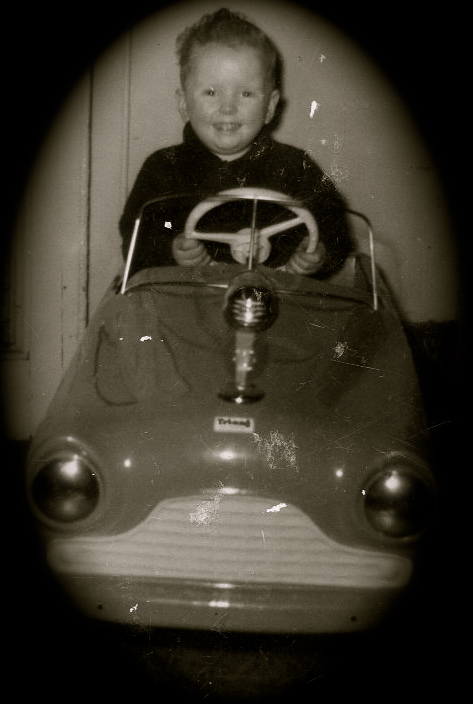
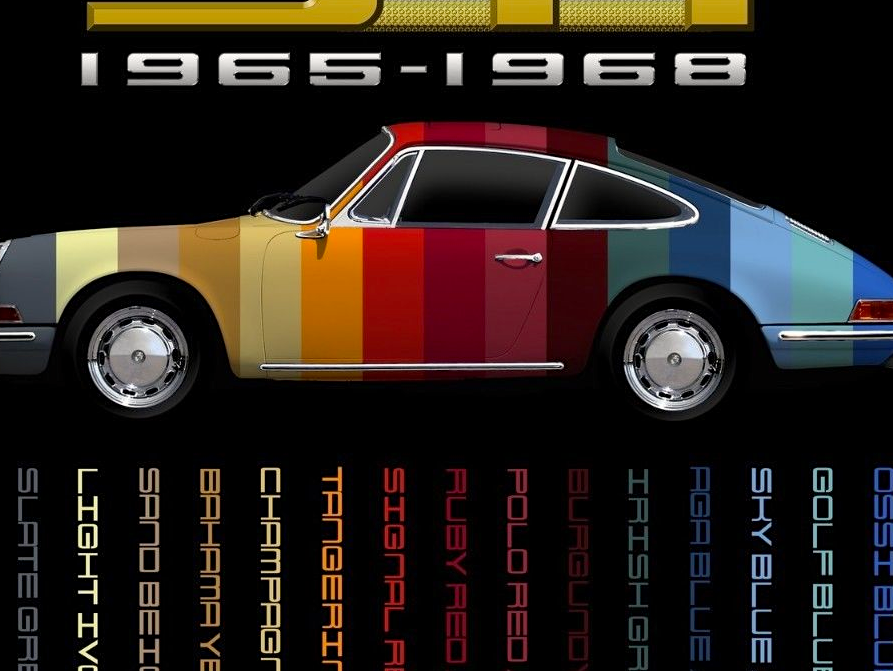
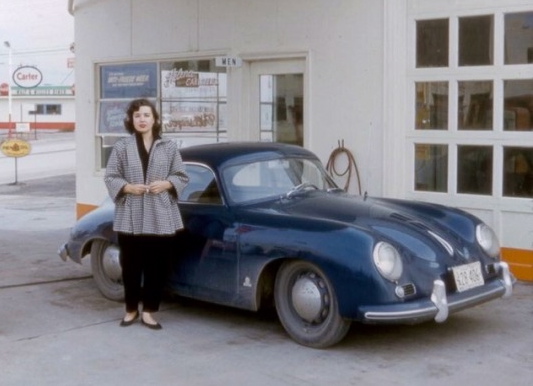
Porsche 356
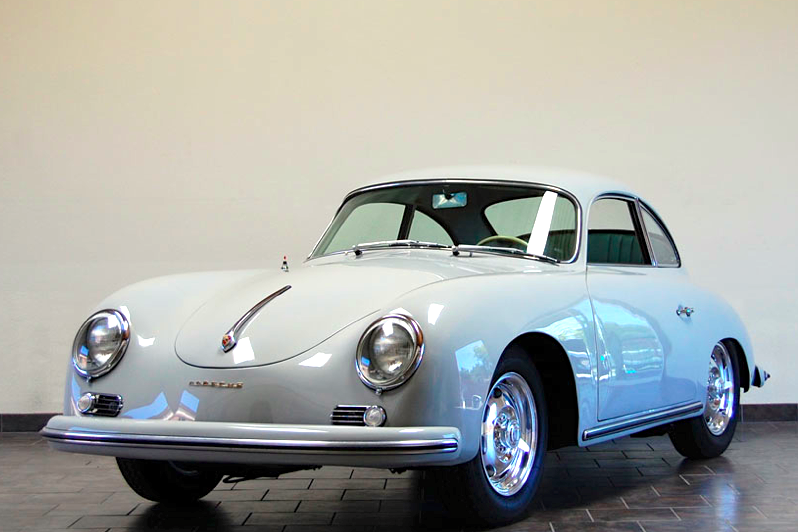
We are very conservative at Border Reivers when it comes to preservation, originality is King, however is the world going to thank us for another Silver 356 ? I whimsically threw in a remark that I had seen this 356 (above) in Dove grey & how sweet it looked. Next thing I know Allan in the paint shop produced a shade card & Big Alex (far to big to mess with) tells me in his very persuasive manner … it’s going to be Grey ………… so i’m afraid it’s going to be Grey.
It’s a dilemma thats been in my head all night but I am warming to the idea and now really look forward to seeing it finished.



Big Alex , Allan & the team below trying to make a decision ( It’s going grey and thats that. all right ….. ? )
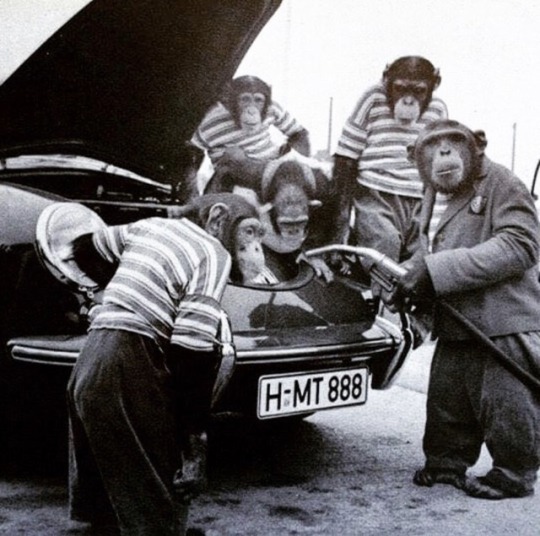
We don’t advertise everything we have in stock or list whats been offered, however this is a new client and is well underway with his restoration & has asked Border Reivers to find its next custodian.

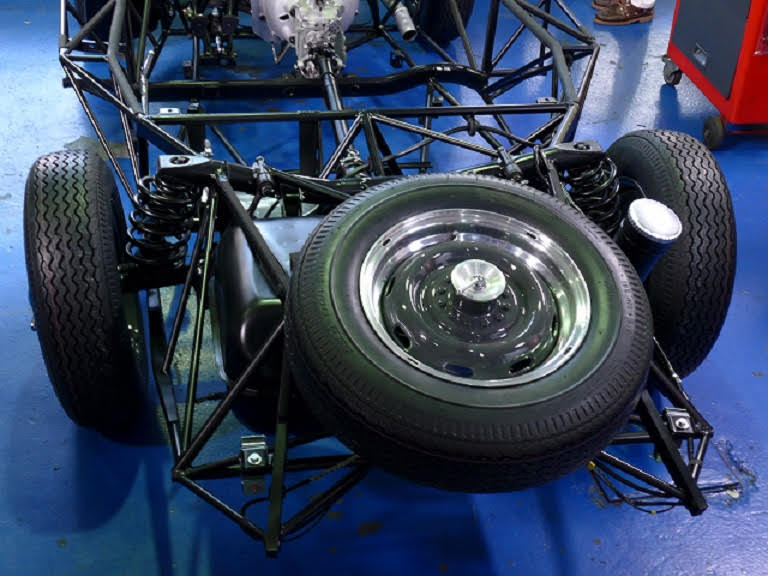
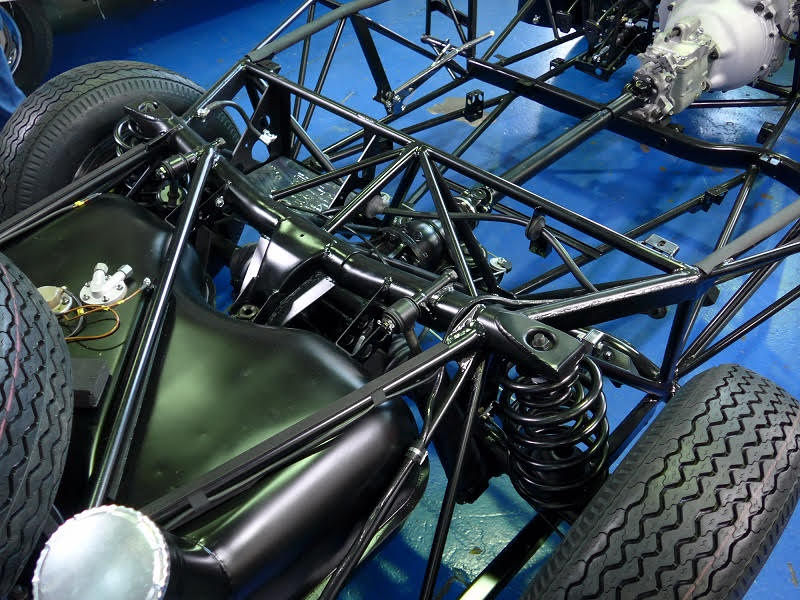


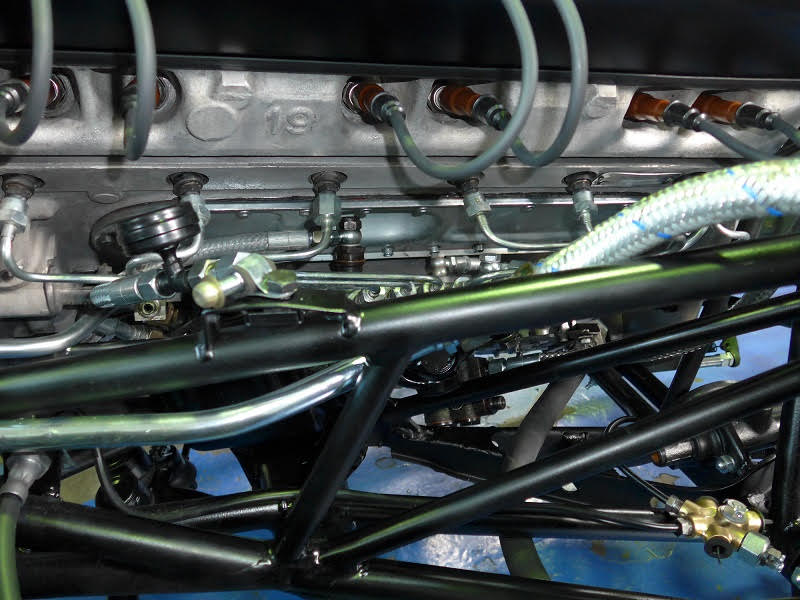
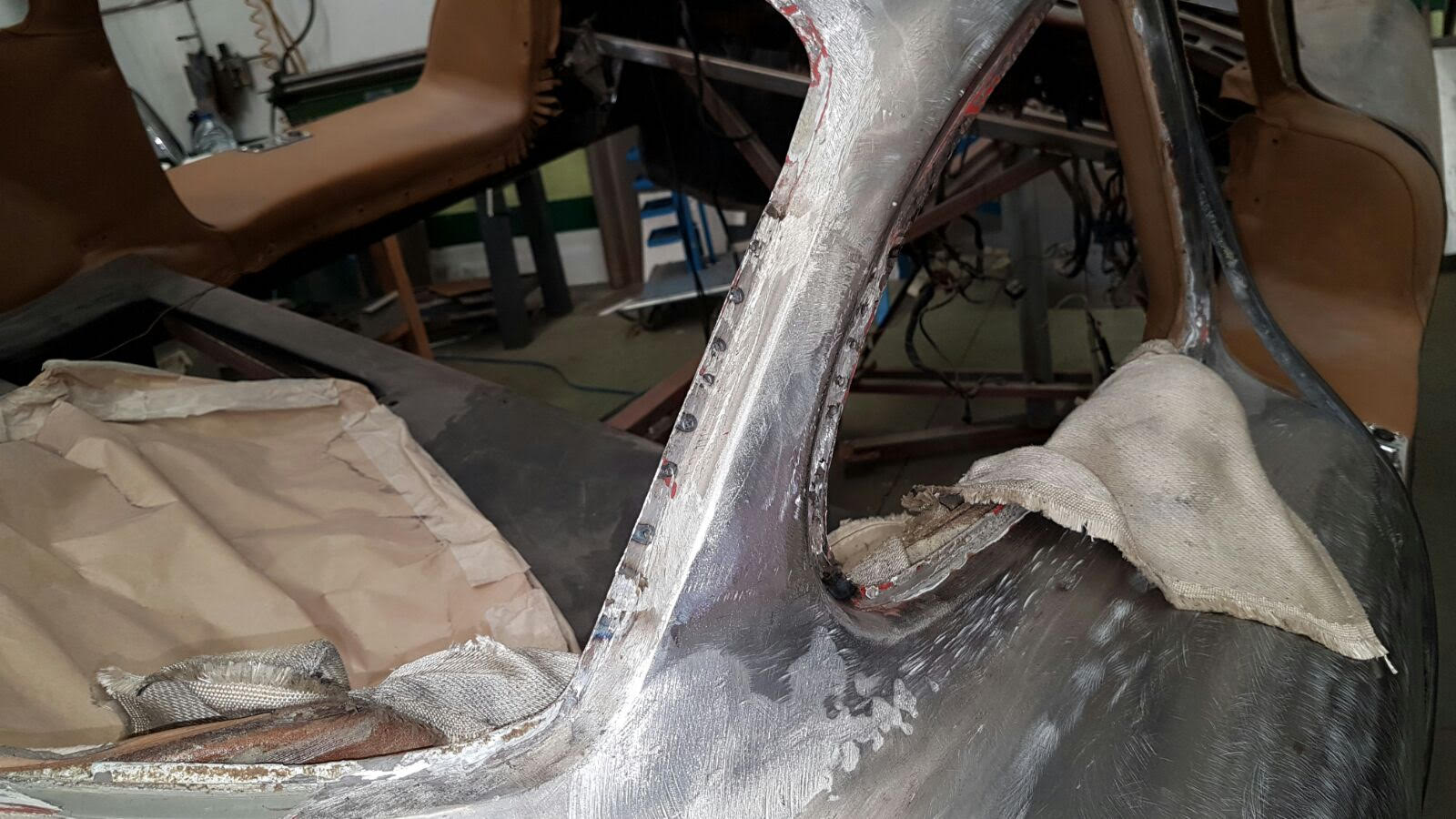




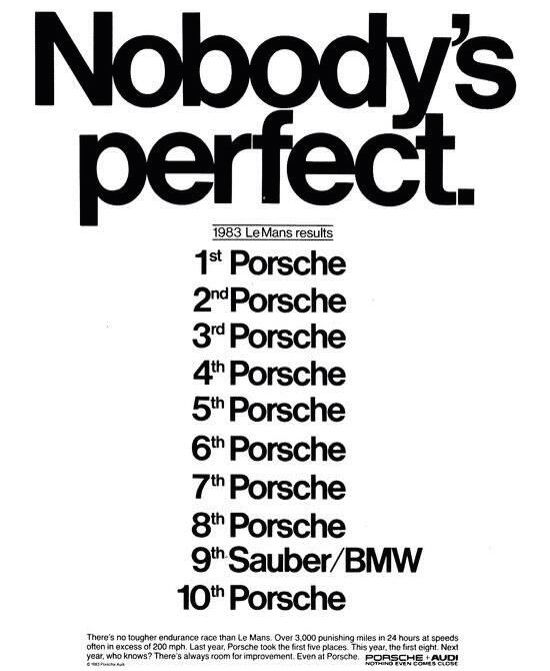
CLICK ON THE ABOVE LINK
I Love this. This guy gets it…….. Sell your expensive Italian Shi* & buy 2 Porsche’s

SUNDAY CINEMA
With our “Sunday Worship” breakfast meetings now over for 2017 and as we draw into the darker winter months, we are pleased to announce our first “Sunday Cinema” events, taking place at the Blythswood Square Hotel, Glasgow, on Sunday 22nd October & Sunday 19th November where we will be screening the classic movies “Le Mans” with Steve McQueen and Grand Prix with James Garner in the private 28 seat cinema.
Sunday 22nd October = Steve McQueen in Le Mans
Sunday 19th November = James Garner in Grand Prix
Included in the “Sunday Cinema” package
Glass of prosecco or beer on arrival
3 course lunch
Tea/coffee
Popcorn during the movie
Private screening of “Le Mans” the movie
Cost £48.00 per person
Places are very limited, so if you would like to join us please get in contact to reserve your place.
info@classic-car-tours.com
Regards & best wishes
Bill Telford
Tour Director
Classic Car Tours
00 44 (0)141 956 5626
Mobile 00 44 (0)7876 211785
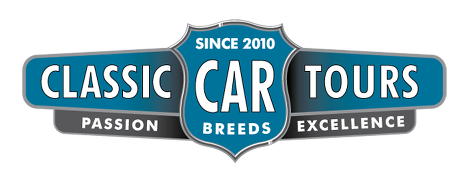
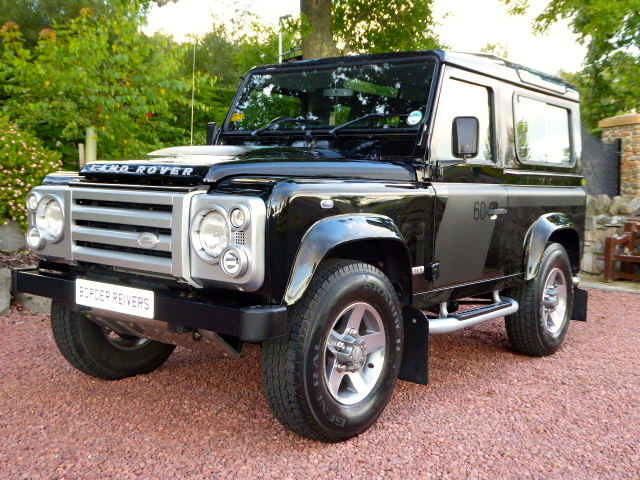
As much as we Love them and they don’t get any better than this, we are always glad to see them go as they free up so much precious showroom space.

Now Sold $946,000.00

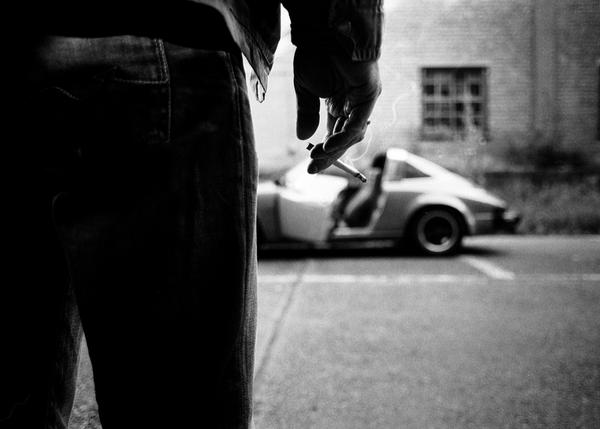
Porsche 911SC Targa
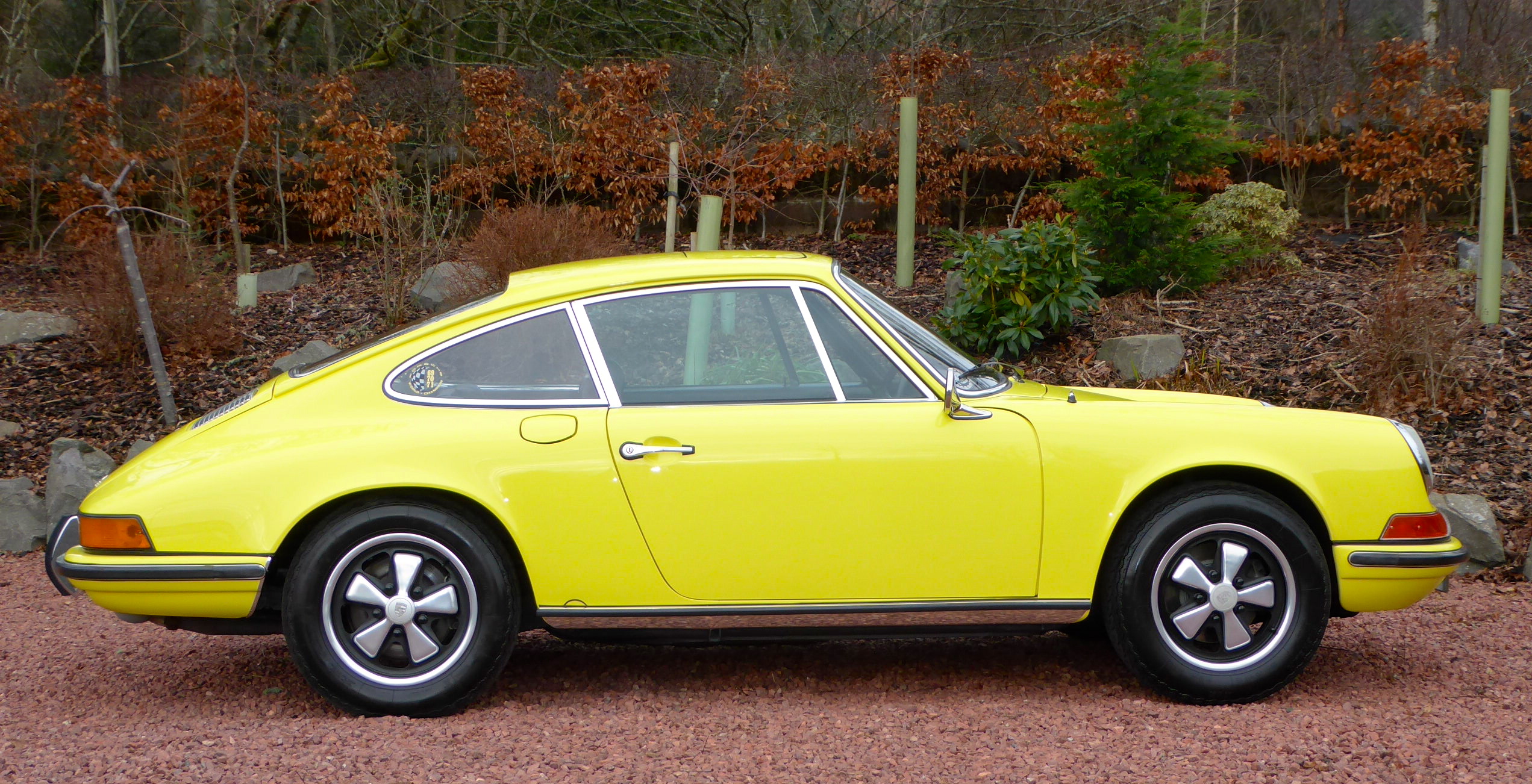
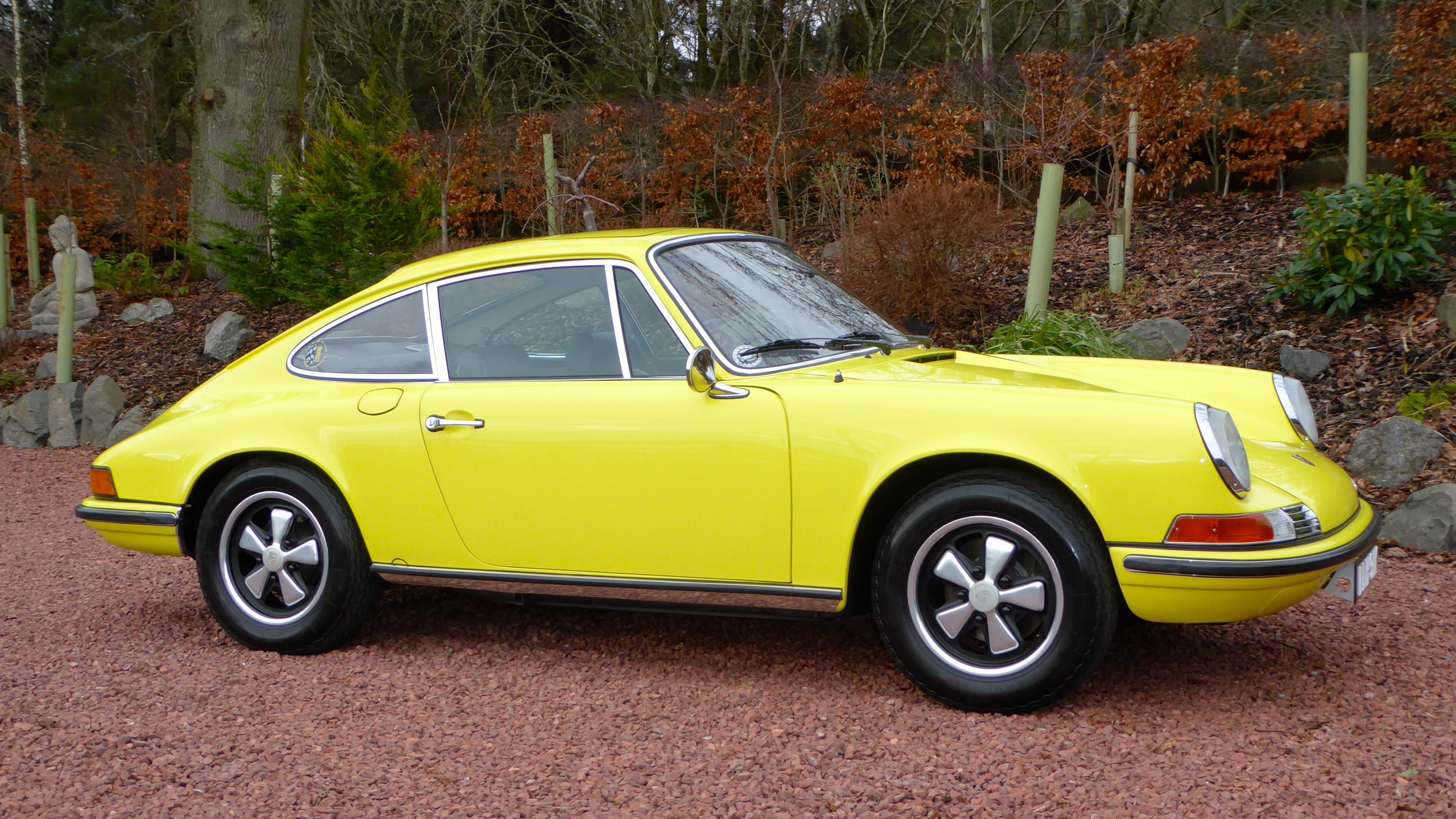
Beautiful original unrestored Porsche 911E form 1972 with the oil filler flap on the rear wing. 69k genuine miles with 2 owner from new.
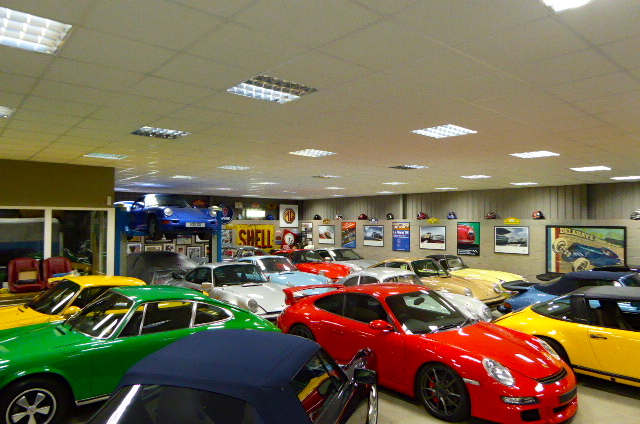
In the shop tonight, lots of new stock & it’s really started to pick up again after the summer holidays.
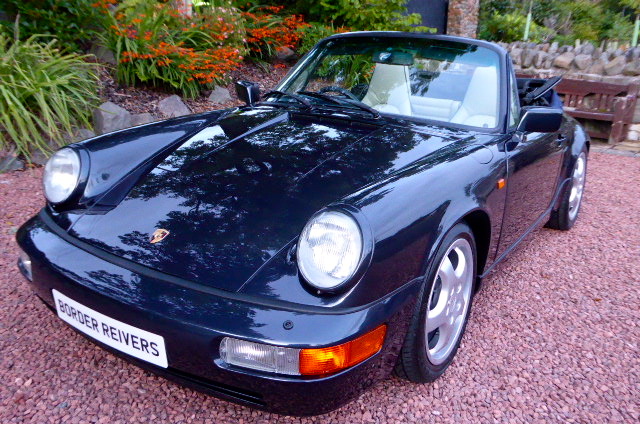
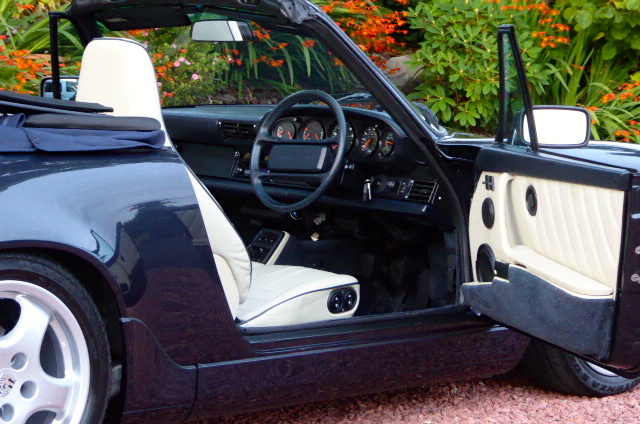
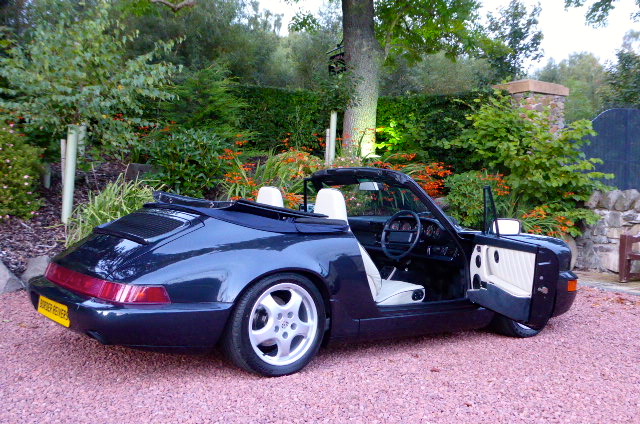
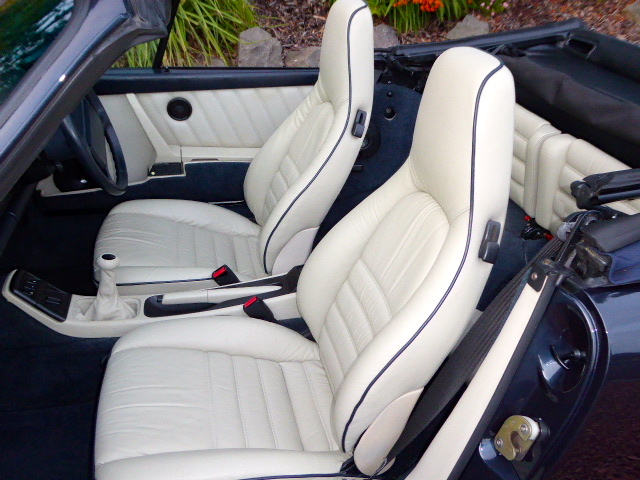
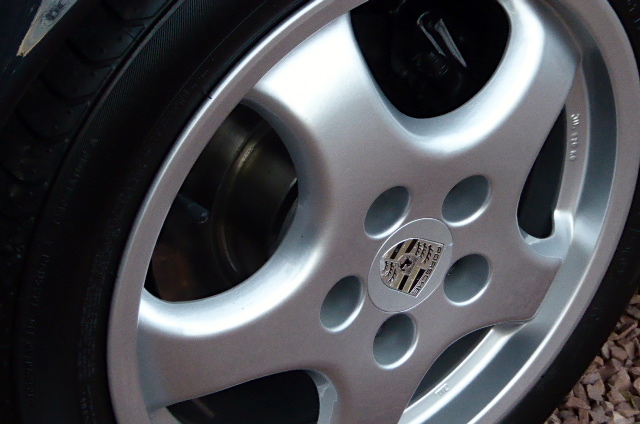
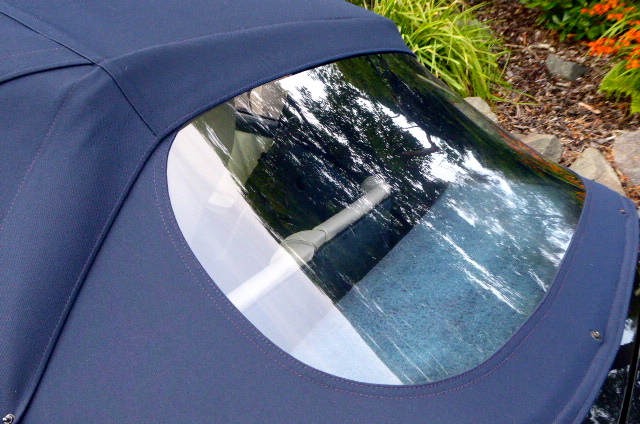
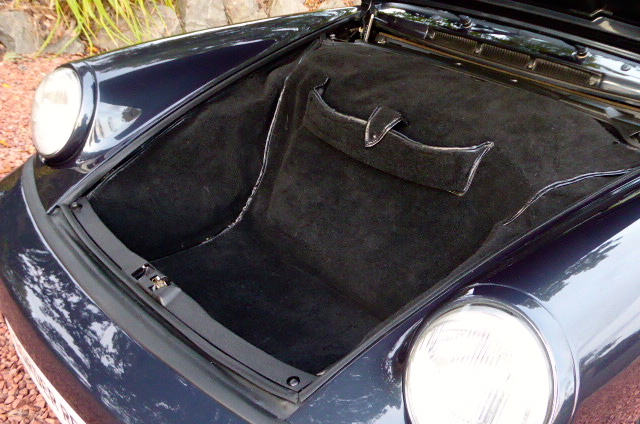
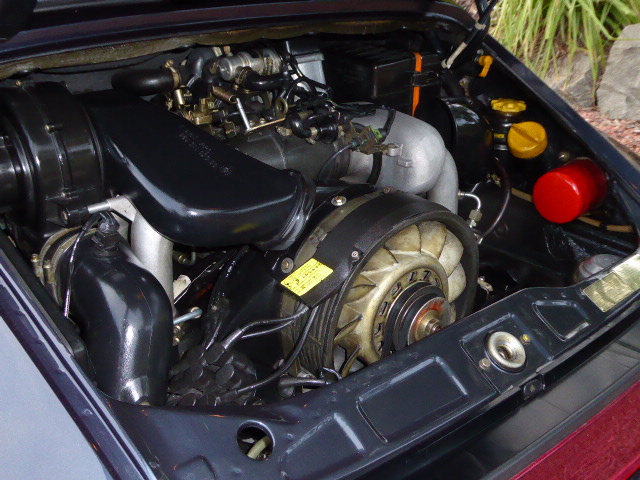
SUNDAY WORSHIP
Our FINAL Sunday Worship breakfast meeting of 2017 takes place on Sunday 17th September between 09.00 and 12.00 at Waitrose Milngavie.

We hope to make this our biggest meeting so far and that you will be able to join us for this free event.
Register your car at info@classic-car-tours.com
http://www.classic-car-tours.com/sunday-worship-breakfast
Regards & best wishes
Bill Telford
Tour Director
Classic Car Tours
00 44 (0)141 956 5626
Mobile 00 44 (0)7876 211785
www.classic-car-tours.com
www.facebook.com/ClassicCarTours
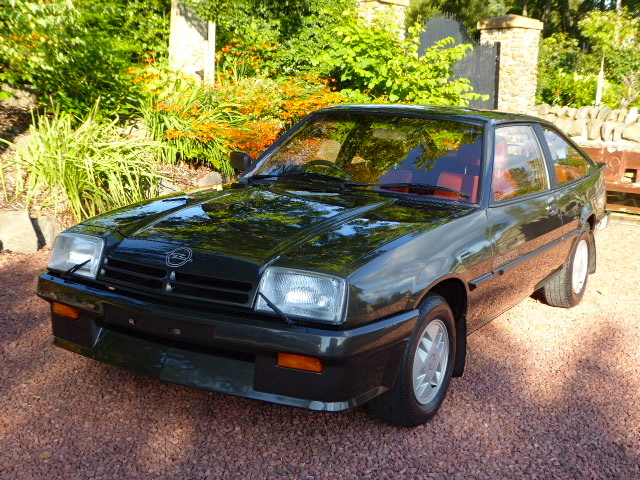
Border Reivers have done it again in bringing another low mileage classic in concours condition to the market. This car is in unbelievable unrestored condition. Its kinda sad someone bought this car & never mistreated it !
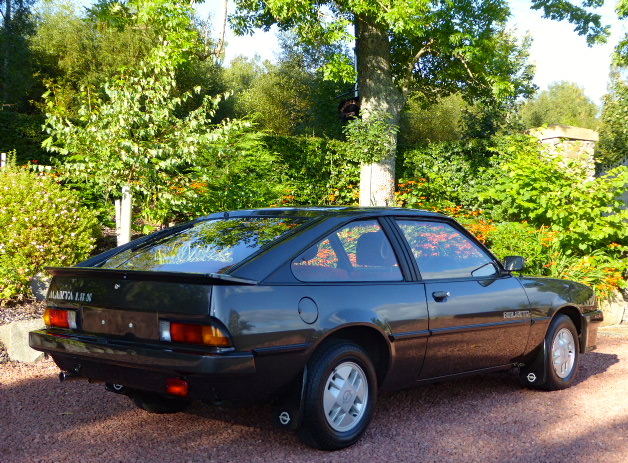
As time passes on, a new era of enthusiasts finds their place within the collector car hobby. While sports cars from the 50s, 60s, and 70s will always remain collectable, a new generation of young, passionate petrol heads begin seeking out the cars they idolized growing up in the 80s, 90s, and beyond. Being a part of this modern generation ourselves gives us the distinct advantage of knowing what the next generation collector is looking for.
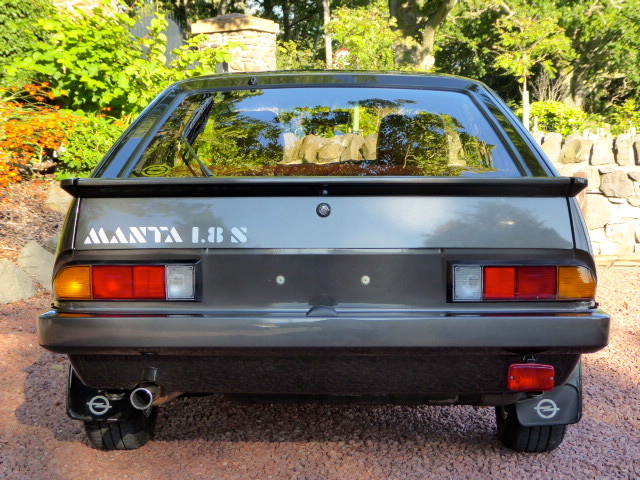
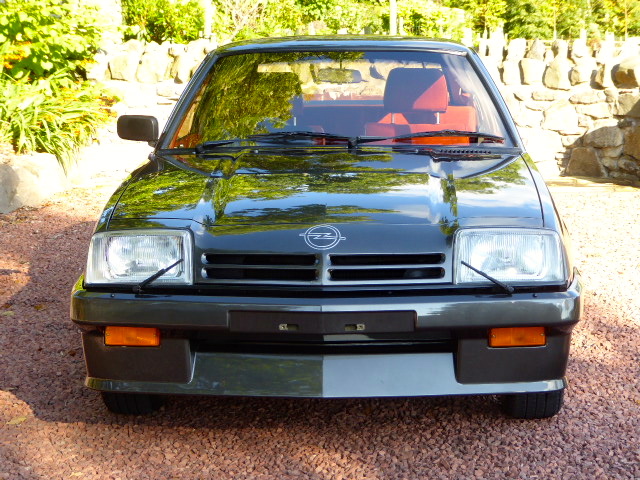
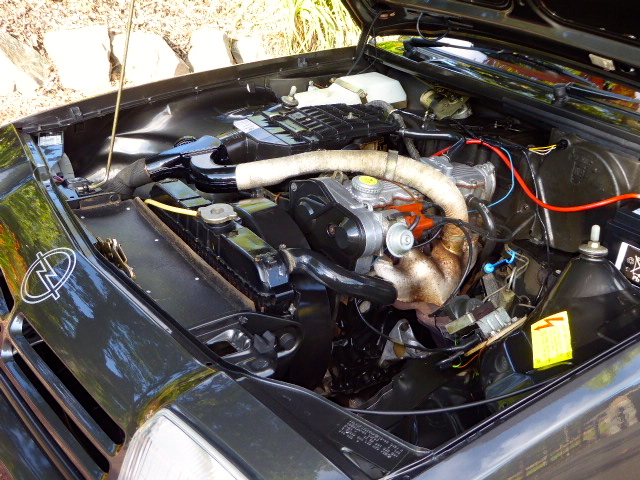
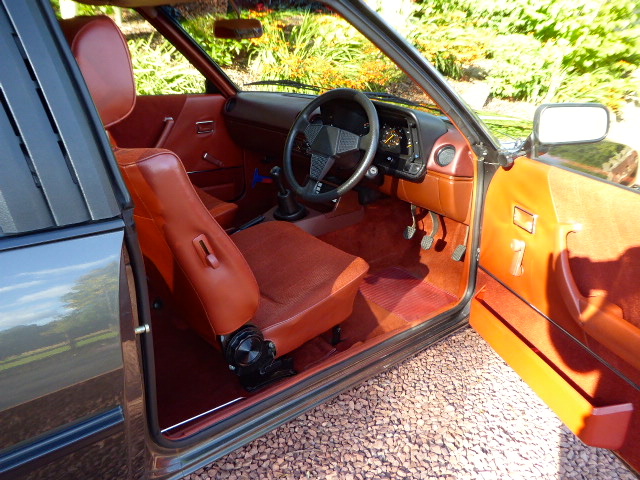
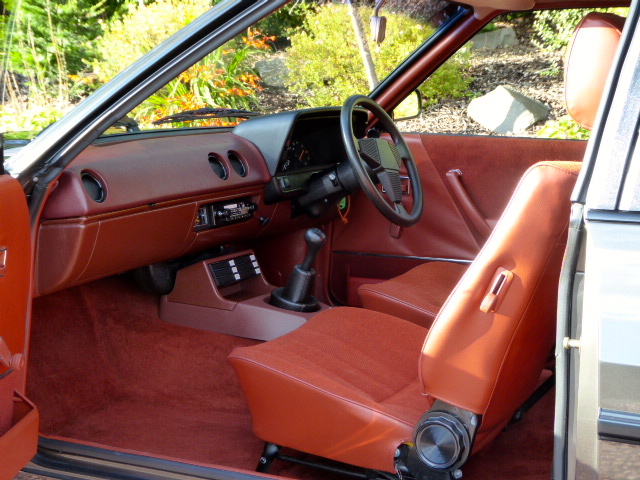
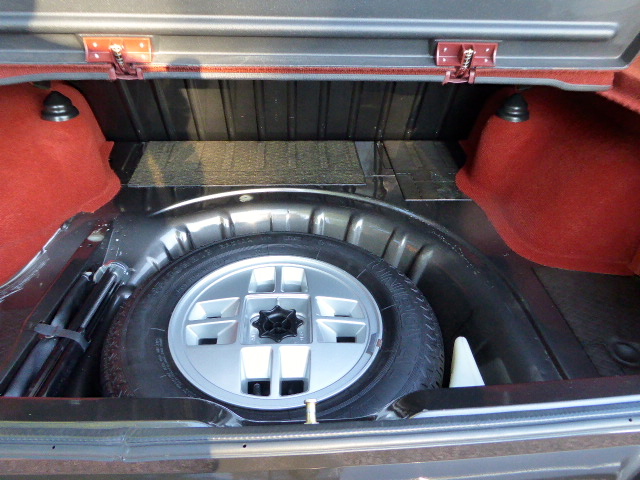
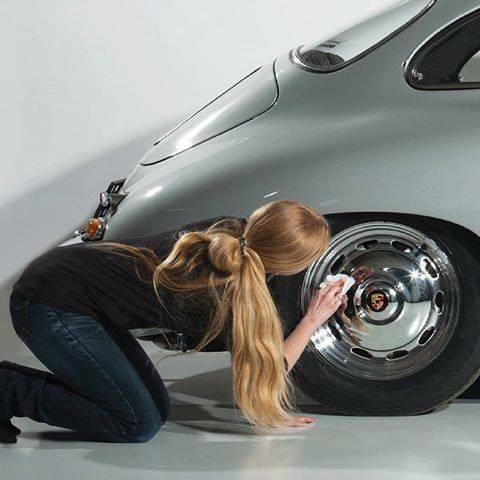
Porsche 356B
We are really excited about our latest purchase not only is it a 2 owner 911 in a magnificent colour with the last owner from 1972 but it was Purchased new by none other than Porsche racing legend John Fitzpatrick (Fitz)
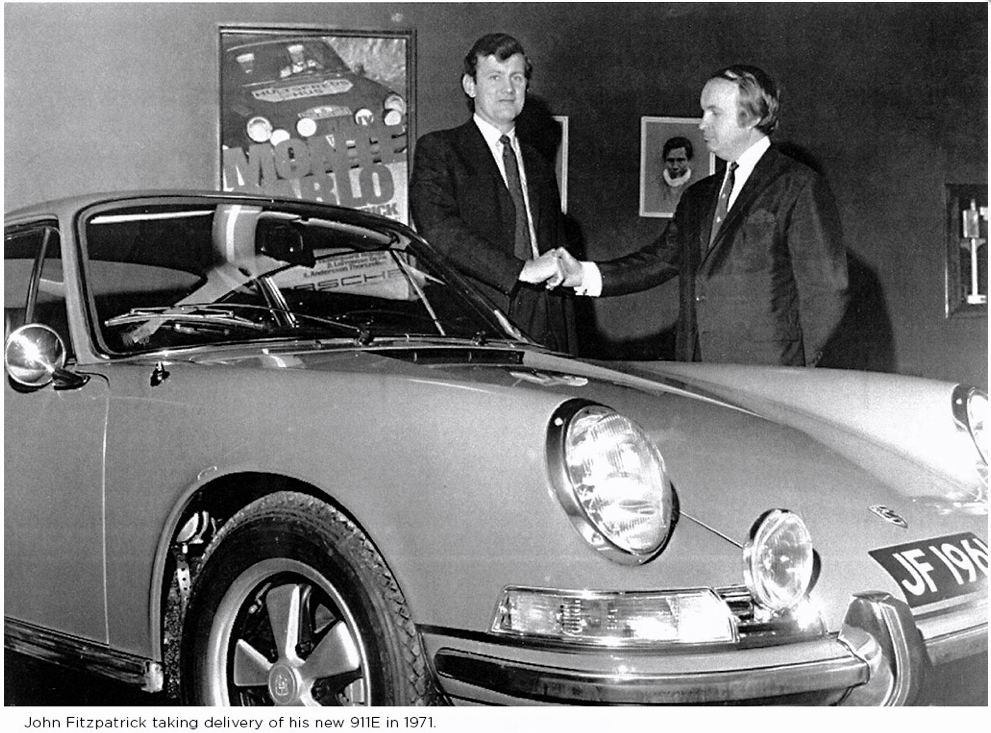
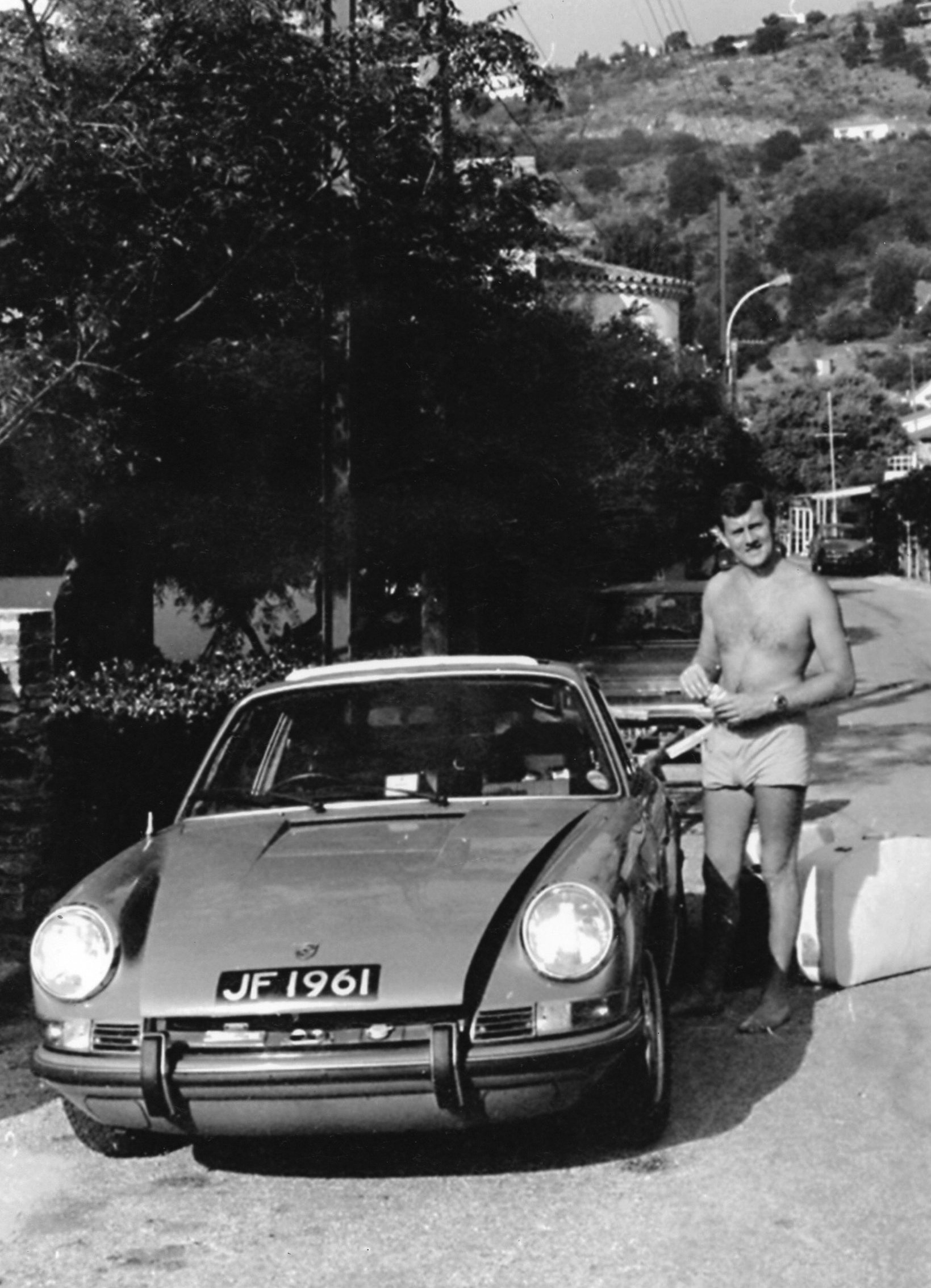
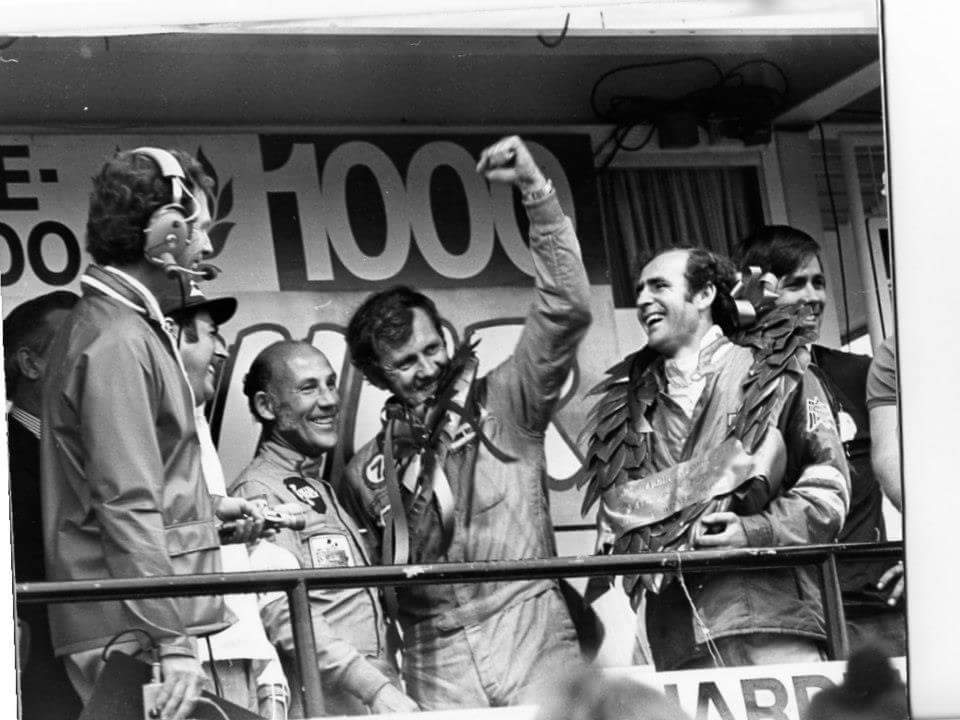
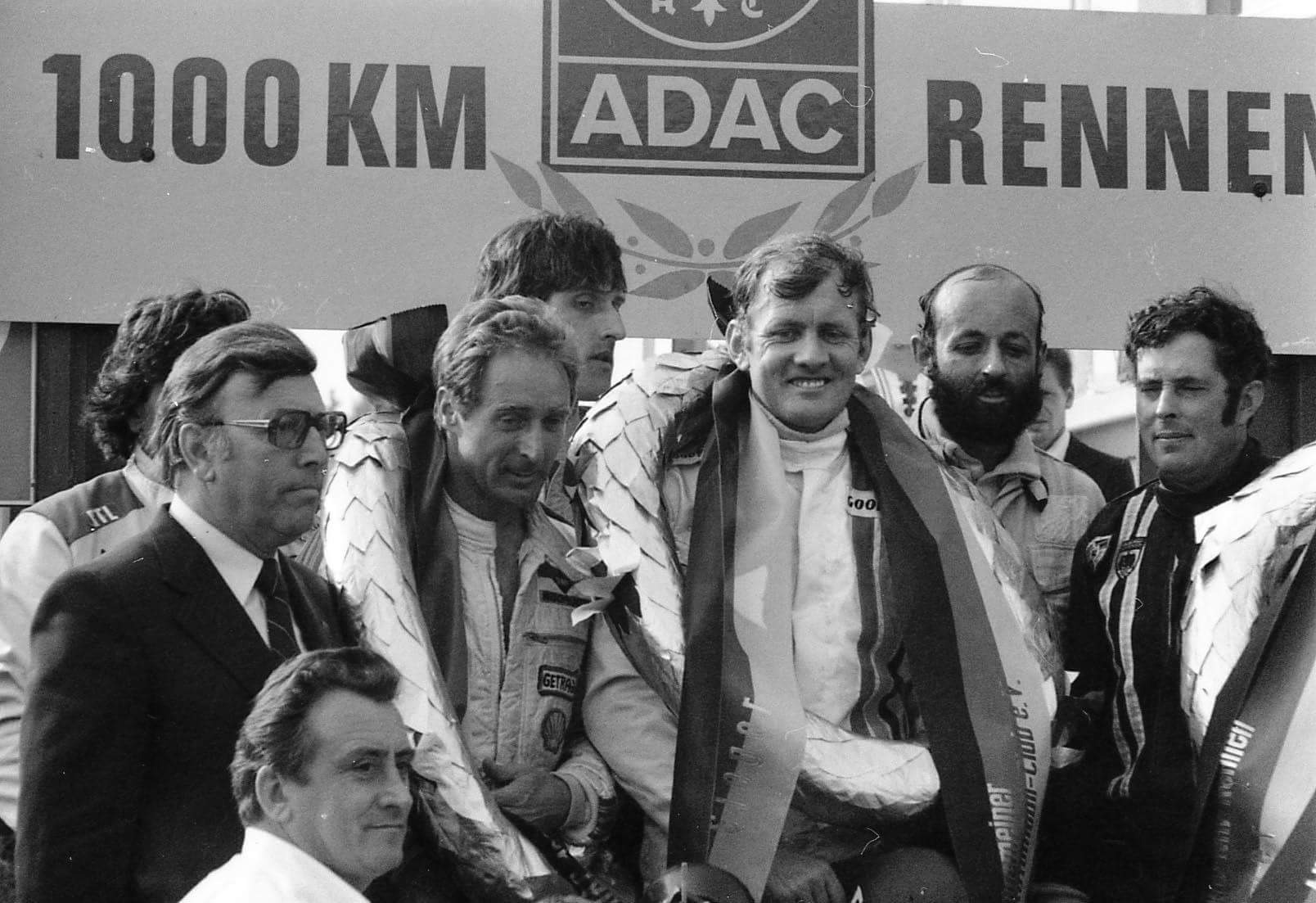
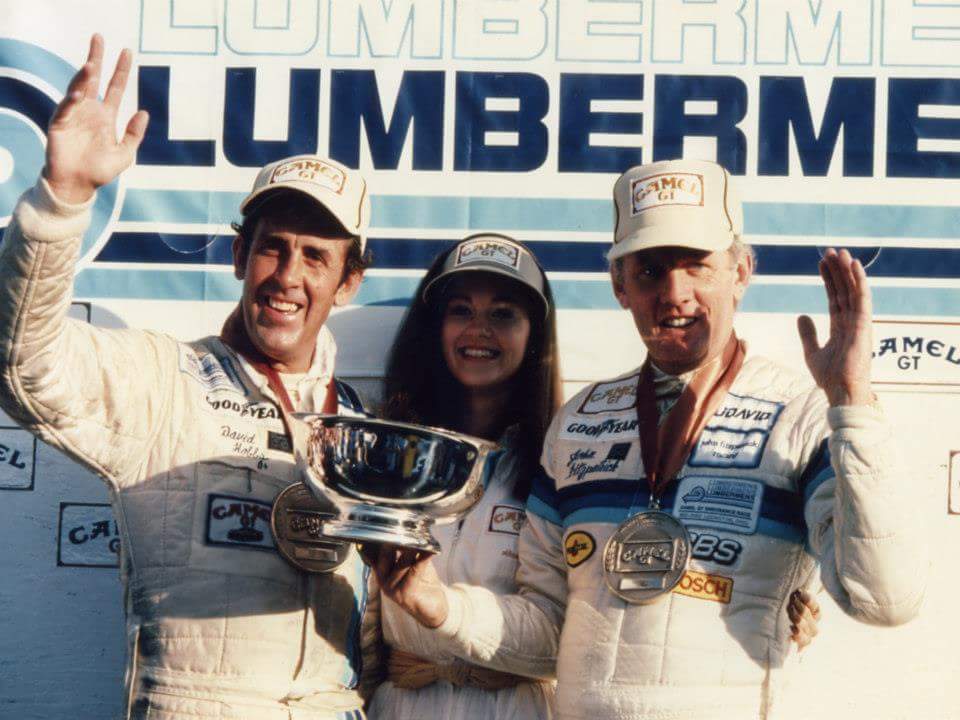
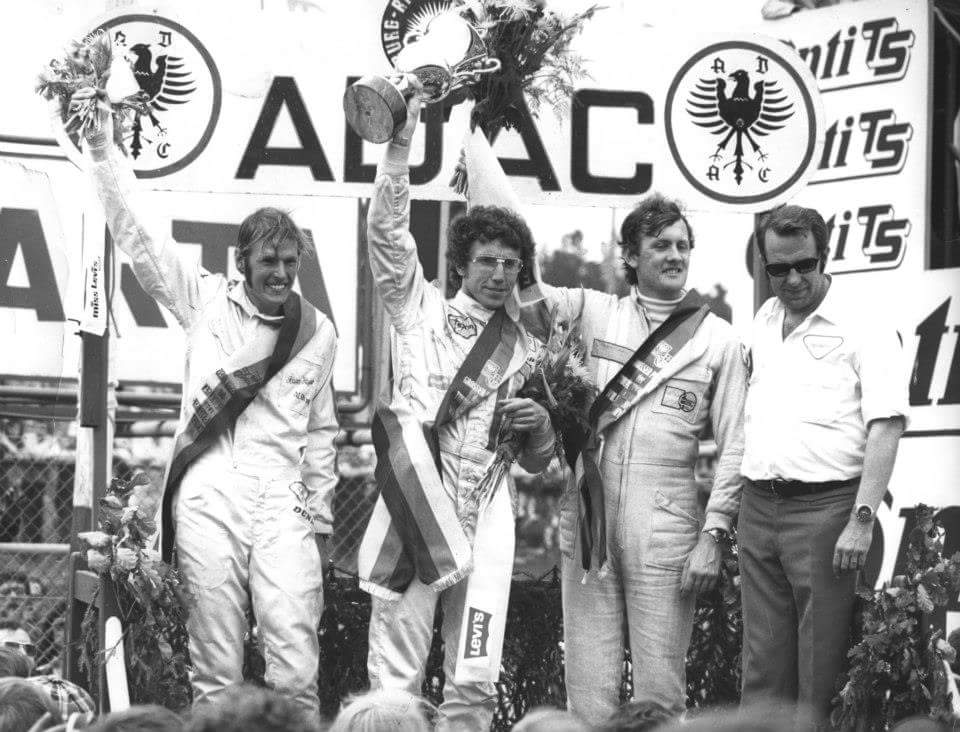
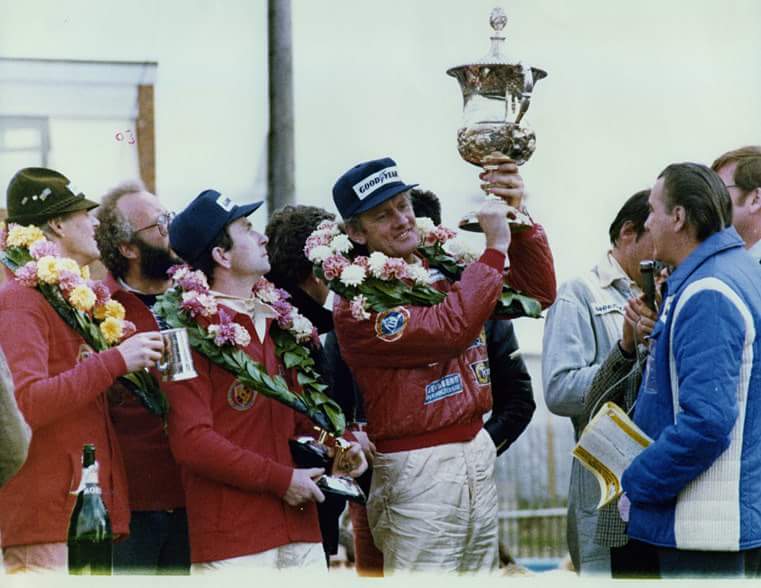
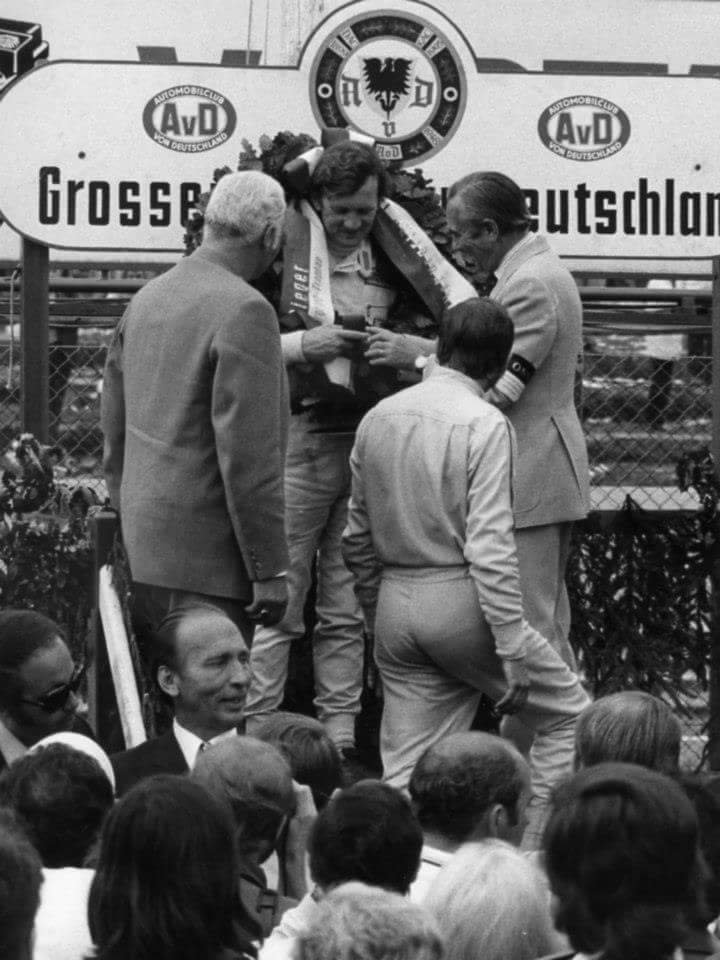
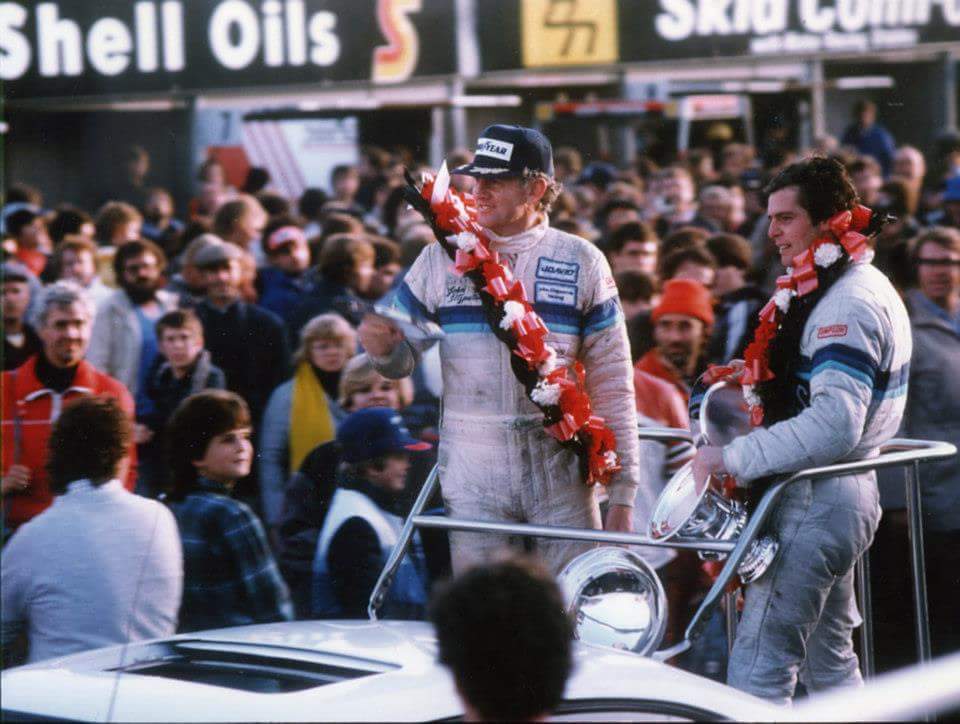
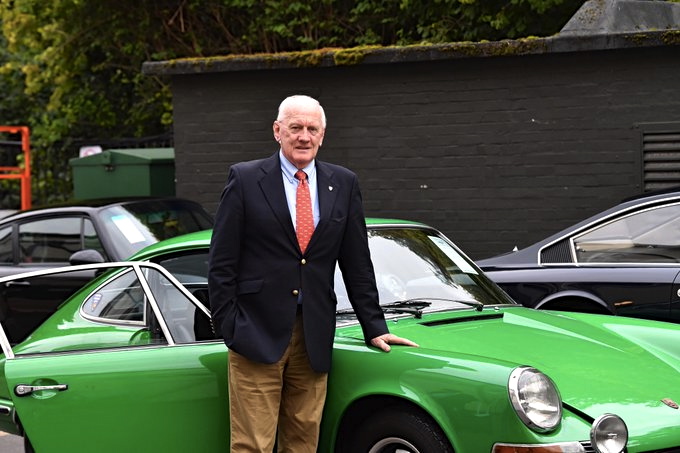
John (with the car today)

Perhaps the most original 911E in the world





Welding finished at last. I am sure you will agree this is a real quality restoration by Scotland top Porsche specialists

If you attended Luftgekühlt 4, you may recognize this very early, very patina’d Porsche 356. If you’re not sure what makes this 356 so exceedingly special, that’s okay, because in all honesty I initially didn’t realize what made it so rare either. But when I first came across it earlier this year in San Diego, I could still recognize its presence as being somehow more than a typical 356. There was something about the tired tin-like finish looking more like raw metal than paint, the whitewall tires, and those lovely ventilated steel wheels—it made the other examples in attendance look… new. Thankfully, I got the inside scoop from its longtime owner, Wayne Baker, a name many Southern California Porsche enthusiasts are familiar with.
Mr. Baker is 75 years young, and the veteran racer has been running Personalized Autohaus Incorporated since 1974. The San Diego-based Porsche garage isn’t some white floor restoration laboratory; it’s an honest workingman’s garage that also serves as a goldmine of classic Porsches and parts. Wayne and his crew have built quite a reputation over their 40-plus-years of service, ranging from routine maintenance to pristine full show car restorations.


But this dull silver bathtub? This thankfully isn’t one of those restoration candidates, and it’d be a shame if anyone did such a thing to this car. Just look at it: I’ve met people with less personality than one scuff mark on this car. To restore anything here would be to erase precious history, and thankfully Wayne feels the same way. He was kind enough to let me swing by his shop before the wrenches started spinning for the day, and even better, he was kind enough to chat about and give me a ride in this pre-A split-window. Here’s what makes Wayne, and his 1951 Porsche 356, stand out.
Andrew Golseth: Wayne, tell me how this all started. Obviously you have a passion for cars, but what made you follow this as a career?
Wayne Baker: When I was in junior high school, we lived in Eugene, Oregon, where my dad was making $1.75 an hour as a machinist. When I was 14 years old, we moved to California because my dad went to work for Lockheed in 1957, where he jumped up to $18 an hour! My grandfather worked for Lockheed as well, so that’s why my dad moved us down the west coast. Anyway, our new neighbor in California had a Porsche, a pre-A car actually; it was an ivory-colored 1954 with tan interior. I was just a kid from farmland Oregon remember, so all I knew were trucks and tractors! This neighbor gave me a couple of rides in the Porsche though, and I quickly learned its charms—the car would go 100 miles per hour with just this little tiny motor in it.


It just impressed the shit out of me, and I’ve loved Porsches ever since. Eventually, by 1963, I bought one brand new. I joined the Air Force in 1960 and they trained me as an electrician. I spent a year in Denver and then thought I would get the chance to go to Europe, but lo and behold, they sent me to Hollywood. I said, “Hollywood? It can’t be Hollywood. That’s like 20 miles from my house.” Well, you know where it says Hollywood on the hill? 100 feet behind that hill was the USAF 1352d Photographic Group. There were 20 military personnel and 300 civilians making movies right there! So, they sent me back to California to repair cameras, of all things.
I was making enough money though to buy a brand new Porsche, a situation I was pretty pleased with. The one I eventually landed on was white with a black interior. It took me four months to get it after placing the order, but once it was in my possession I put over 40,000 miles on it in just two years; I simply drove it everywhere. That was my first Porsche. Then, I had children, you know the story… I sold it and got a Chevy to haul around the kids, but in ’69 I bought a 911 and I’ve had cars like it ever since.
AG: How did fixing cameras for the Air Force turn into Personalized Autohaus? What happened in between?
WB: After I picked up my first Porsche, I started working part-time at an independent shop in North Hollywood. This was sometime around 1964. That’s how I got into it initially. From there, I went to visit the Porsche factory and shortly afterwards I began mechanic’s school in Los Angeles in October of 1965. This was the very beginning of the 911s, and they taught us how to do the engines and transmissions on them.
Fast forward to 1974, and I didn’t want to work for a dealer anymore. I think one person told me, “You should be in your own business,” and so, in 1974 I opened up Personalized Autohaus just off of Morena Boulevard here in San Diego.
We had our business there for ten years before moving shop to Miramar in 1985, which is where we’ve been ever since. We’re not really a show shop; it’s a working shop. And obviously, as you can see, it’s packed with stuff in here. We have two mechanics and a helper, so it’s just a small business that my wife and I run.



AG: It certainly looks like you guys stay busy. So, what’s the history with this car—the ’51 split window? It looks like it’s got a few tales to tell itself.
WB: Well, this car was originally purchased by Petermax Müller, who was a Porsche racing driver. He ran in the 1952 24 Hours of Le Mans with something similar to this car, but it wasn’t this specific example. That said, this was his personal car from new until around 1953. After he put the first 9,500 kilometers on it, Müller sold it to an American who was stationed in Germany. The military man drove it in Germany until he shipped the car back to California at the end of his tour. I’m not sure exactly when, but I believe it was before Porsche dealers started popping up in the states—it was sometime in the early ’50s.
AG: How’d you end up with it? There can’t be many pre-A split-window cars left.


WB: I believe there were 1,080 coupes made from 1950-1952. From what I’ve gathered, there’s roughly 200 or so left of those, and some guys in Europe I’ve talked with think there’s probably only a 100 or so that still run. So, not many.
This car eventually came down to San Diego and Joel Naive bought it, who I knew through the Porsche club. He had three of them at the time: one was a cab and two were coupes. They were parts cars to him. He bought this one because he wanted the engine, which he ended up swapping into his 1950 Cabriolet.
Then back around 1976, 1977, Joel restored this car. In 1978 I went to an annual PCA event, a big show in Colorado. Joel thought he would win first overall because they’d never had anything quite like this enter. Well, the week before he got there, the judges were trying to figure out how to judge it. It was so rare, so unique, and the work that went into it was done so well. But, politically first overall ended up going to another car, a modern car. It wasn’t even a classic. So, Joel got second overall, but won his class. He turned around, quit the club, and I ended up buying the car from him in 1979.
AG: What have you done to the car since then?
WB: I really haven’t done much to it lately. I just put tires on it, redid the brakes, got the electrical stuff all working properly, and replaced some miscellaneous parts, but the biggest thing I did was rebuild the engine using the original magnesium case. It took a while to collect everything. Two years ago I started gathering everything to complete the original engine, the 1300cc.


Otherwise, we’ve sort of just left everything else as-is. It was originally a red color but it was repainted to silver in the fifties, which I estimate is the same paint it still wears because the paint looked pretty bad already by the time I got it! Honestly, silver of that period looks bad after just a few years; the paint just wasn’t very good then.
AG: But it sure has aged beautifully.
WB:Yes, she has.
We typically name our cars and we call this one Louise, after Ferdinand Porsche’s daughter of course. Louise is a “history car.” What I’m trying to tell you is all these little things that were done, modifications and improvements made over time by previous owners, that’s part of the story. You can find an original car, but finding an original-original, completely untouched from the factory car is pretty unlikely. Every car is a little different. I didn’t want to take away or remove any of the car’s history. Bringing it back to its original spec would have erased its life. Back then, when somebody owned a car they liked and cared about, they upgraded it to keep up with the times instead of just replacing it with a new one every few years.
AG: It’s a shame, because nobody really does that anymore. Now, cars and every other consumable for that matter are built to be recycled rather than last a lifetime.
WB: Precisely. For instance, this car was obviously loved but someone along the way didn’t like the transmission. The original transmission was a crash ‘box, which are really miserable to drive, so I can’t really blame him for swapping it out. In ’52 they started putting synchros in them. So, the owner, I believe it was the military guy, he brought it here and by 1955 he upgraded the transmission from the crash ‘box to synchros.
I got the car, rebuilt and installed the original engine, and the guys here at the shop asked me, “Are you going to rebuild the transmission too?” I said, “Well, let’s put in the engine and transmission and see if it works.” And it fucking works perfectly! So I left it alone. The same owner upgraded the brakes too. In 1952 they became what they now call “A” drums. So they were upgraded in period and still work well. Someone upgraded the radio in the ‘50s—it’s a correct six-volt radio from the period though. There are just a lot of small and larger changes like these that were done to this car over the years.


AG: Can you educate me (and the others that don’t know), about what makes this a “Pre-A” model, aside from the split front window? What’s different about this car?
WB: Well, these early bodies were built by Reutter until Porsche bought Reutter out. There are a lot of things done differently, obviously the bent window being one, but also the bumpers. The bumpers are integrated into the body, which is kind of funny when you think about how that concept has come full circle in modern cars. Also, the wheels, they’re 16-inch wheels, which were rather large for the era on such a small car, but they’re also very narrow. Kind of odd dimensions with those. It’s also a very lightweight car. In the manual it says 1,690 pounds, but we put it on racing scales and it weighs 1,646 pounds with one gallon of gas in it. It’s light, but remember, it’s only got that Volkswagen 25 horsepower engine inside, so it takes something like 22 seconds from a standing stop to hit 100 kilometers per hour!


AG: Not rapid in a straight line then, but what’s it like to drive overall? Is it pretty hairy with those tall, narrow tires?
WB: It’s fun to drive around but we mostly take it out to shows and special events. The suspension is kind of primitive. I was driving it on the freeway and the off ramp sign said 45mph through the turn, and I think to myself, “Well, I could do 70 in my A-model 356. No problem.” So I adjusted from there and I thought I was going to take it easy at 55 mph, but by the time I got to the other end, I was running the inside and that goddamn car was wriggling all over the place! I could barely control it. I came out at the end right by the edge of the outer wall. Doing just 55. It scared the shit out of me! There was nobody with me, thankfully. So, what it’s like to drive: I learned if it says 45, you go 45 when you’re in this car.



Our Stunning Porsche 968CS heads to its new custodian in Ireland (Boy, he’s going to have fun)